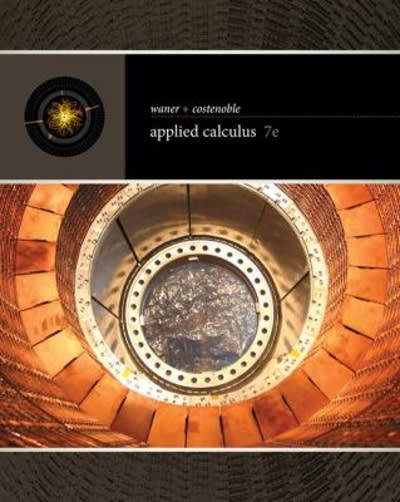Question
1. Water treatment facilities supplement water with fluoride in order to reach a target concentration of fluoride in drinking water distributed to the public. Certain
1.Water treatment facilities supplement water with fluoride in order to reach a target concentration of fluoride in drinking water distributed to the public. Certain levels of fluoride enhance dental health, but very high concentrations can be dangerous. The target daily mean concentration set by the Environmental Protection Agency is 0.75 mg/L. The treatment plant operators collect 24 samples each day, 1 every hour, to determine whether the mean concentration differs from the target. Samples are collected from two different treatment plants, TPlant 1, and TPLant 2, for a single day at each plant. Data collected are provided in the second tab of the data file. Answer the following questions (remember to show all steps):
a.For TPlant 1, conduct the appropriate hypothesis test at the 5% significance level to test whether the target mean fluoride concentration is achieved on that day.
b.Conduct the appropriate hypothesis test at the 5% significance level to test whether the target mean fluoride concentration is higher at TPlant 2 compared to TPLant 1.
Data:
Tplant 1 Fluoride Concentrations (mg/L)Tplant 2 Fluoride Concentrations (mg/L) 0.750.74 0.60.77 0.70.54 0.650.79 0.680.87 0.690.62 0.670.67 0.80.77 0.860.74 0.780.53 0.670.79 0.741.11 0.870.66 0.840.78 0.690.76 0.690.9 0.670.85 0.631 0.850.77 0.771.07 0.790.98 0.610.49 0.590.67 0.690.48
2.To investigate the effects of human land-use on freshwater environments, Christensenet al.(1996) conducted a study on 16 lakes in Wisconsin and Michigan.They looked for a relationship between development of the shoreline and the amount of coarse woody debris, which is detached woody material, such as tree branches.Coarse woody debris enters lakes from forested watersheds and provides physical habitat for aquatic organisms and is also important for nutrient cycling.Coarse woody debris was measured as cross-sectional area of stems in a given area (m2/km).For each area, the researchers measured cabin density (cabins /km2) to quantify shoreline development.
a.Identify the dependent and independent variable, including units.
b.Make a scatterplot between the dependent and independent variable, and include a linear regression line. Describe the relationship between coarse woody debris and cabin density.
c.What is the correlation coefficient? Explain if the correlation is statistically significant.
d.Is the slope statistically significant? Explain.
e.Use the linear regression line equation to predict the amount of coarse woody debris for an area that has 10 cabins per sq. km. Is it appropriate to make this prediction?Explain.
Data:
Cabin density (no./km2)Coarse woody debris (m2/km) 0183 0.6134 0130 0121 0128 6.797 1.965 041 3.652 4.846 654 4.112 11.81 12.34 171 24.64
3.Water used for irrigation in coastal areas often has high salinity levels, which may have detrimental effects on some crops. A controlled experiment is conducted to study the effect of salinity levels, as measured by electrical conductivity - EC (nohms/cm), on the yield of tomatoes (kg/plot) using four experimental plots, with each plot irrigated with water with a different level of EC. Data from the experiment are provided in the fourth tab of the data file.
a.State the null and alternative hypothesis.
b.Assess the requirements of the analysis.
c.Interpret the conclusion of the hypothesis test using the appropriate statistics from the ANOVA table.
d.Run a post-hoc Tukey test and use the results to explain which data sets are different from each other (if any).
Data:
Electrical-conductivity = 1.6 nohms/cmElectrical-conductivity = 3.8 nohms/cmElectrical-conductivity = 6.0 nohms/cmElectrical-conductivity = 10.2 nohms/cm
59.555.251.744.6
53.359.148.848.5
56.852.853.941
63.154.54947.3
58.746.1
Step by Step Solution
There are 3 Steps involved in it
Step: 1

Get Instant Access to Expert-Tailored Solutions
See step-by-step solutions with expert insights and AI powered tools for academic success
Step: 2

Step: 3

Ace Your Homework with AI
Get the answers you need in no time with our AI-driven, step-by-step assistance
Get Started


